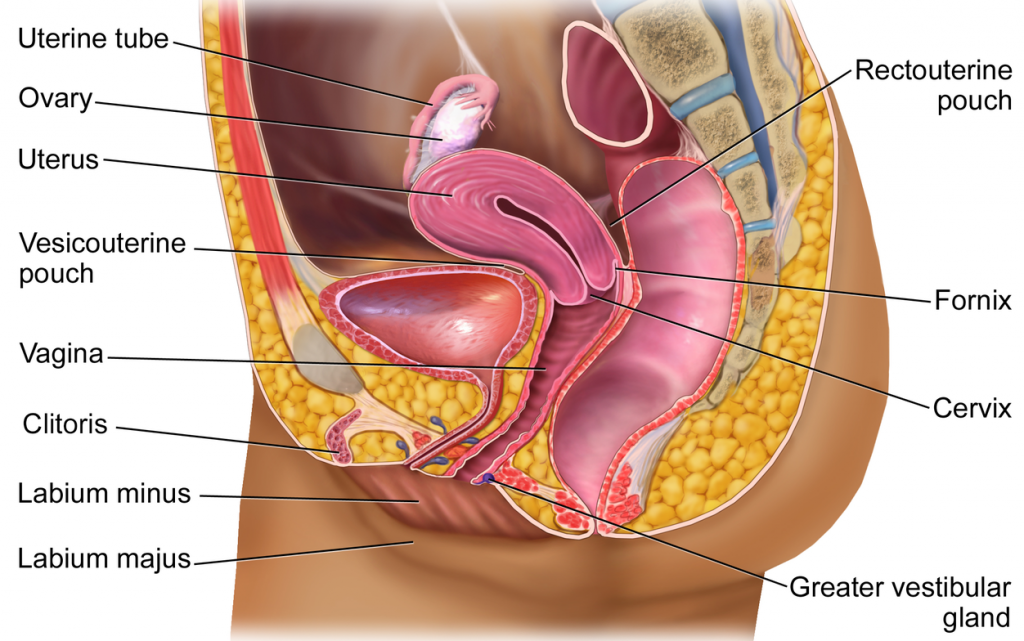89 Growth in Adolescence
Martha Lally; Suzanne Valentine-French; and Dinesh Ramoo
Learning Objectives
- Summarize overall physical growth
- Describe the changes that occur during puberty
- Describe the changes in brain maturation
- Describe the changes in sleep
- Describe gender intensification
- Identify nutritional concerns
- Describe eating disorders
- Explain the prevalence, risk factors, and consequences of adolescent pregnancy
Puberty is a period of rapid growth and sexual maturation. These changes begin sometime between ages eight and fourteen. Girls begin puberty at around ten and boys begin approximately two years later. Pubertal changes take around three to four years to complete. Adolescents experience an overall physical growth spurt. The growth proceeds from the extremities toward the torso. This is referred to as distalproximal development. First the hands grow, then the arms, and finally the torso. The overall physical growth spurt results in 10-11 inches of added height and 50 to 75 lb of increased weight. The head begins to grow sometime after the feet have gone through their period of growth. Growth of the head is preceded by growth of the ears, nose, and lips. The difference in these patterns of growth result in adolescents appearing awkward and out of proportion. As the torso grows, so do the internal organs. The heart and lungs experience dramatic growth during this period.
During childhood, boys and girls are quite similar in height and weight. However, gender differences become apparent during adolescence. From approximately ages ten to fourteen, the average girl is taller but not heavier than the average boy. After that, the average boy becomes both taller and heavier, although individual differences are certainly noted. As adolescents physically mature, weight differences are more noteworthy than height differences. At eighteen, those that are heaviest weigh almost twice as much as the lightest, but the tallest teens are only about 10 percent taller than the shortest (Seifert, 2012).
Both height and weight can certainly be sensitive issues for some teenagers. Most modern societies, and the teenagers in them, tend to favour relatively short women and tall men, as well as a somewhat thin body build, especially for girls and women. Yet, neither socially preferred height nor thinness is the destiny for many individuals. Being overweight, in particular, has become a common, serious problem in modern society due to the prevalence of diets high in fat and lifestyles low in activity (Tartamella, Herscher, and Woolston, 2004). The educational system has, unfortunately, contributed to the problem as well by gradually restricting the number of physical education courses and classes in the past two decades.
Average height and weight are also related somewhat to racial and ethnic background. In general, children of Asian background tend to be slightly shorter than children of European and North American background. The latter in turn tend to be shorter than children from African societies (Eveleth and Tanner, 1990). Body shape differs slightly as well, though the differences are not always visible until after puberty. Asian youth tend to have arms and legs that are a bit short relative to their torsos, and African youth tend to have relatively long arms and legs. The differences are only averages as there are large individual differences as well.
Sexual Development
Typically, the growth spurt is followed by the development of sexual maturity. Sexual changes are divided into two categories: primary sexual characteristics and secondary sexual characteristics. Primary sexual characteristics are changes in the reproductive organs. For males, this includes growth of the testes, penis, scrotum, and spermarche or first ejaculation of semen. This occurs between ages eleven and fifteen. For females, primary characteristics include growth of the uterus and menarche or the first menstrual period. The female gametes, which are stored in the ovaries, are present at birth, but are immature. Each ovary contains about 400,000 gametes, but only 500 will become mature eggs (Crooks and Baur, 2007). Beginning at puberty, one ovum ripens and is released about every twenty-eight days during the menstrual cycle. Stress and higher percentage of body fat can bring menstruation at younger ages.

Male anatomy: Males have both internal and external genitalia that are responsible for procreation and sexual intercourse. Males produce their sperm on a cycle, and unlike the female’s ovulation cycle the male sperm production cycle is constantly producing millions of sperm daily. The main male sex organs are the penis and the testicles, the latter of which produce semen and sperm. The semen and sperm, as a result of sexual intercourse, can fertilize an ovum in the female’s body; the fertilized ovum (zygote) develops into a fetus, which is later born as a child.

Female anatomy: Female external genitalia is collectively known as the vulva, which includes the mons veneris, labia majora, labia minora, clitoris, vaginal opening, and urethral opening. Female internal reproductive organs consist of the vagina, uterus, fallopian tubes, and ovaries. The uterus hosts the developing fetus, produces vaginal and uterine secretions, and passes the male’s sperm through to the fallopian tubes while the ovaries release the eggs. A female is born with all her eggs already produced. The vagina is attached to the uterus through the cervix, while the uterus is attached to the ovaries via the fallopian tubes. Females have a monthly reproductive cycle; at certain intervals the ovaries release an egg, which passes through the fallopian tube into the uterus. If, in this transit, it meets with sperm, the sperm might penetrate and merge with the egg, fertilizing it. If not fertilized, the egg is flushed out of the system through menstruation.

Secondary sexual characteristics are visible physical changes not directly linked to reproduction, but signal sexual maturity. For males this includes broader shoulders and a lower voice as the larynx grows. Hair becomes coarser and darker, and hair growth occurs in the pubic area, under the arms, and on the face. For females breast development occurs around age ten, although full development takes several years. Hips broaden and pubic and underarm hair develops and also becomes darker and coarser.
Acne: A consequence of the hormonal changes in puberty is acne, defined as pimples on the skin due to overactive sebaceous (oil-producing) glands (Dolgin, 2011). These glands develop at a greater speed than the skin ducts that discharges the oil. Consequently, the ducts can become blocked with dead skin and acne will develop. According to the University of California at Los Angeles Medical Center (2000), approximately 85 percent of adolescents develop acne, and boys develop acne more than girls because of greater levels of testosterone in their systems (Dolgin, 2011). Experiencing acne can lead the adolescent to withdraw socially, especially if they are self-conscious about their skin or teased (Goodman, 2006).
Effects of pubertal age: The age of puberty is getting younger for children throughout the world. According to Euling et al. (2008), data are sufficient to suggest a trend toward an earlier breast development onset and menarche in girls. A century ago the average age of a girl’s first period in the United States and Europe was sixteen, while today it is around thirteen. Because there is no clear marker of puberty for boys, it is harder to determine if boys are maturing earlier too. In addition to better nutrition, less positive reasons associated with early puberty for girls include increased stress, obesity, and endocrine-disrupting chemicals.
Cultural differences are noted with Asian American girls, on average, developing last, while African American girls enter puberty the earliest. Hispanic girls start puberty the second earliest, while European American girls rank third in their age of starting puberty. Although African American girls are typically the first to develop, they are less likely to experience negative consequences of early puberty when compared to European American girls (Weir, 2016).
Research has demonstrated mental health problems linked to children who begin puberty earlier than their peers. For girls, early puberty is associated with depression, substance use, eating disorders, disruptive behaviour disorders, and early sexual behaviour (Graber, 2013). Early maturing girls demonstrate more anxiety and less confidence in their relationships with family and friends, and they compare themselves more negatively to their peers (Weir, 2016).
Problems with early puberty seem to be due to the mismatch between the child’s appearance and the way she acts and thinks. Adults especially may assume the child is more capable than she actually is, and parents might grant more freedom than the child’s age would indicate. For girls, the emphasis on physical attractiveness and sexuality is emphasized at puberty and they may lack effective coping strategies to deal with the attention they may receive.

Additionally, mental health problems are more likely to occur when the child is among the first in their peer group to develop. Because the preadolescent time is one of not wanting to appear different, early developing children stand out among their peer group and gravitate toward those who are older. For girls, this results in them interacting with older peers who engage in risky behaviours such as substance use and early sexual behaviour (Weir, 2016).
Boys also see changes in their emotional functioning at puberty. According to Mendle, Harden, Brooks-Gunn, and Graber (2010), while most boys experienced a decrease in depressive symptoms during puberty, boys who began puberty earlier and exhibited a rapid tempo, or a fast rate of change, actually increased in depressive symptoms. The effects of pubertal tempo were stronger than those of pubertal timing, suggesting that rapid pubertal change in boys may be a more important risk factor than the timing of development. In a further study to better analyze the reasons for this change, Mendle, Harden, Brooks-Gunn, and Graber (2012) found that both early maturing boys and rapidly maturing boys displayed reductions in the quality of their peer relationships as they moved into early adolescence, whereas boys with more typical timing and tempo development actually experienced improvements in peer relationships. The researchers concluded that the transition in peer relationships may be especially challenging for boys whose pattern of pubertal maturation differs significantly from those of others their age. Consequences for boys attaining early puberty was increased odds of cigarette, alcohol, or other drug use (Dudovitz et al., 2015).

Gender-role intensification: At about the same time that puberty accentuates gender, role differences also accentuate for at least some teenagers. Some girls who excelled at math or science in elementary school may curb their enthusiasm and displays of success at these subjects for fear of limiting their popularity or attractiveness as girls (Taylor, Gilligan, and Sullivan, 1995; Sadker, 2004). Some boys who were not especially interested in sports previously may begin dedicating themselves to athletics to affirm their masculinity in the eyes of others. Some boys and girls who once worked together successfully on class projects may no longer feel comfortable doing so, or alternatively may now seek to be working partners, but for social rather than academic reasons. Such changes do not affect all youngsters equally, nor affect any one youngster equally on all occasions. An individual student may act like a young adult on one day, but more like a child the next.
Media Attributions
- Figure 6.1: Male reproductive system. © Wumingbai is licensed under a CC BY-SA (Attribution ShareAlike) license
- Figure 6.2: Female reproductive system. © BruceBlaus is licensed under a CC BY (Attribution) license
- Figure 6.3: First time shaving. © Sander Sammy is licensed under a Public Domain license
- Figure 6.4: Puberty. © Ortrun Lenz is licensed under a CC0 (Creative Commons Zero) license
- Figure 6.5: Effects of puberty on boys. © Adam Jones is licensed under a CC BY-SA (Attribution ShareAlike) license

